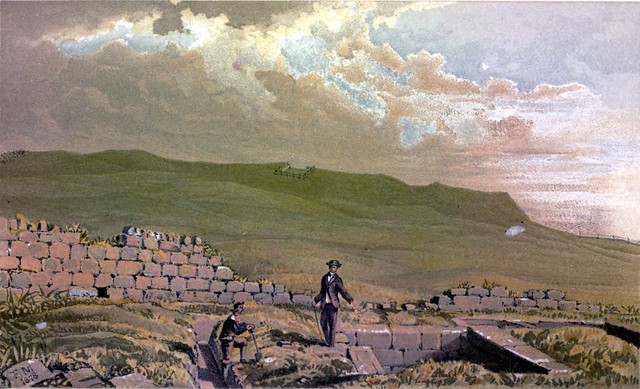Topics > Northumberland > Seaton Delaval > Seaton Delaval, 1848
Seaton Delaval, 1848
SEATON-DELAVAL, a township, in the parish of Earsdon, union of Tynemouth, E. division of Castleward, S. division of Northumberland, 6½ miles (N. by W.) from North Shields; containing 1,568 inhabitants, and comprising 2676a. 2r. lp. The surface is undulated and well wooded; and the soil, which is generally a strong clay, and partly arable, produces good crops of wheat and beans. The township abounds with steam-coal, which is extensively wrought under Lord Hastings, and mostly by the Seaton-Delaval Company, who commenced the sinking of the pits in 1838: a tramway to the Tyne facilitates the shipment of the produce. The village is neat and uniform. Here are the ruins of one of the most magnificent mansions in the north of England, erected from a design by Sir John Vanbrugh, in 1707, by Admiral Delaval, of freestone from the quarries of the place, and destroyed by fire on January 3rd, 1822; one roof was saved, and portions have been restored. Around are extensive gardens, and the views of the sea and adjacent, country are beautiful. Near the ruins is the site of the ancient castle of Seaton-Delaval, of which little remains except the chapel, a fine specimen of Norman architecture, containing two noble arches, some monuments, and numerous escutcheons, banners, and pieces of armour: divine service is performed every Sunday, for which Lord Hastings presents £40 annually to the minister. The impropriate tithes, including those of Hartley, have been commuted for £416. There is a place of worship for Wesleyans.
Extract from: A Topographical Dictionary of England comprising the several counties, cities, boroughs, corporate and market towns, parishes, and townships..... 7th Edition, by Samuel Lewis, London, 1848.

Co-Curate Page
Seaton Delaval, 1855
- Extract from: History, Topography, and Directory of Northumberland...Whellan, William, & Co, 1855. SEATON DELAVAL is a township and village in [Earsdon parish], the property of Lord Hastings, The area of …













